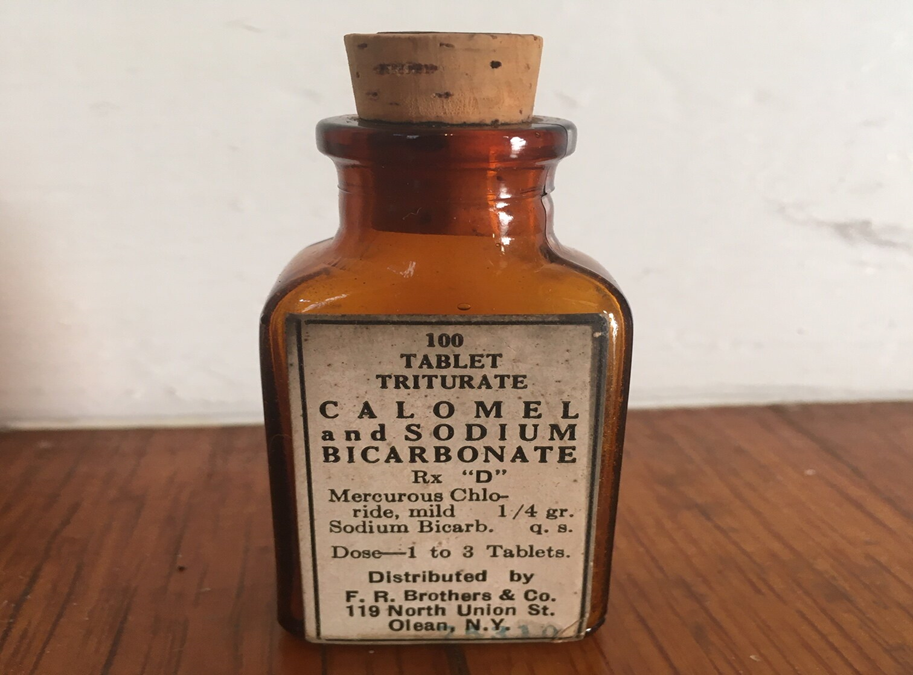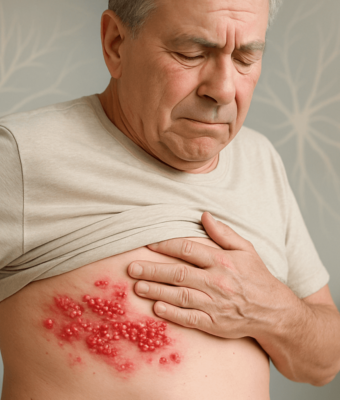In the annals of medical history, peculiar medical treatments have left us stunned. Explore the strange and unusual medical practices that once shaped the healing landscape, from bloodletting to mercury rubs. These treatments, though unconventional, showcase the evolution of medical practices and the strides we’ve made in understanding and treating ailments.
1. Chloroform: A Toxic Slumber

During the 19th century, chloroform was extensively used as an anesthetic in medical procedures, particularly surgeries. It was considered a groundbreaking discovery, as it could quickly render the patient unconscious and reduce pain during operations. However, later studies revealed that chloroform also had some severe side effects that were not known earlier. Long-term exposure to chloroform could cause liver and kidney damage, respiratory depression, and potentially lead to cancer. These adverse health effects caused a significant concern among medical professionals, which led to the abandonment of chloroform as an anesthetic in favor of safer alternatives.
2. Bloodletting: A Balancing Act

Bloodletting, a medical practice from 3000 years to ancient Egypt, was believed to balance the body’s “humors” and cure many diseases. The practice involved using leeches or lancets to remove blood from the body carefully. It was believed that by doing so, the body’s natural balance could be restored, and the patient’s health would improve. Bloodletting continued until the 19th century, when it was gradually phased out as advances in medical science proved ineffective and often dangerous. Despite its long history, bloodletting is now widely regarded as a relic of the past and is no longer practiced by modern medicine.
3. Arsenic: The Double-Edged Cure

Arsenic is a chemical element once considered a key component in medicines like “Fowler’s Solution.” This solution treated various medical conditions such as malaria, syphilis, and other ailments during the 19th and early 20th centuries. However, it was later discovered that arsenic carried a toxic risk and could lead to arsenic poisoning, which could lead to severe health complications and even death. As a result, the use of arsenic-based medicines was eventually discontinued in the 1950s, and safer alternatives were developed to ensure patient safety.
4. Mercury: A Toxic Elixir

Throughout history, Mercury has been considered a valuable substance, revered for its supposed life-extending properties by many ancient civilizations, including the Persians and Chinese alchemists. Mercury was believed to be the key to eternal life and was used in various medicines and treatments. However, as our understanding of this element grew, its harmful effects on the human body became widely known. Today, we know that Mercury is highly toxic and can cause severe damage to the kidneys and nervous system, leading to a range of neurological issues. As a result, its use in medical treatments has been halted and replaced with safer alternatives.
5. Urine Drinking: Therapeutic Misconceptions

Throughout history, different cultures have engaged in unique health practices that may seem bizarre to us today. One such practice was the consumption of urine for medicinal purposes. In ancient Egypt, Greece, and Rome, urine was believed to have therapeutic benefits and was widely used as a remedy for various health conditions, including kidney and liver problems. This practice was based on the belief that urine contained vital nutrients and minerals that could help heal the body. While this may seem unappealing to us today, it was a common practice among many cultures throughout history.
6. Trepanning: Drilling into the Unknown

Trepanning has been a common medical practice in many ancient civilizations. This procedure involves drilling or cutting a hole in the skull to relieve pressure or treat a variety of medical ailments such as headaches, seizures, and mental disorders. However, due to the lack of modern anesthesia and surgical tools, the procedure was extremely dangerous and carried significant risks. Many patients who underwent trepanning did not survive the operation or suffered from severe complications. Despite its risks, trepanning remained a popular medical practice for centuries and is still used in some parts of the world today.
7. Leeching: Bloodletting with a Twist

During the medieval period in Europe, leeches were frequently used for bloodletting. Bloodletting involves the use of leeches to attach to the skin and suck out blood. The belief was that it would help cure various illnesses and improve overall health. In addition to bloodletting, leeches were used to remove blood clots. This medieval practice remained popular in Europe until the 19th century, after which more modern medical practices gradually replaced it.
8. Cupping: Ancient Chinese Vacuum Therapy

Cupping is an alternative therapy that has been practiced in China for centuries. This ancient Chinese method uses heated glass cups to create a vacuum on the skin. This vacuum is believed to improve blood flow and promote healing by removing toxins from the body. Cupping is an effective treatment for various ailments, including pain, inflammation, respiratory problems, and digestive disorders. The therapy also relieves stress and anxiety by promoting relaxation and improving overall well-being.
9. Mummy Powder: Macabre Medicine

During the medieval period in Europe, it was a common belief that mummy powder possessed certain healing properties. Mummy powder was a powdered form of mummies obtained from Egypt, and it was believed to be particularly effective in treating wounds, headaches, and digestive issues. It was often used as a remedy by physicians and apothecaries, who thought the powder had magical and healing powers. Despite being a gruesome and controversial practice, the use of mummy powder remained prevalent in medieval Europe for many centuries.
10. Nightshade: Poisonous Pain Relief

In ancient times, people used nightshade as a pain relief medication. It is a poisonous plant with soothing properties and can induce a state of calmness in the user. However, nightshade is also highly toxic and can cause hallucinations, delirium, and even death if consumed in large quantities. Despite the potential risks, some cultures have continued to use nightshade for its medicinal properties, although safer alternatives have since been developed.
11. Ether: Flammable Anesthetic

In the mid-19th century, ether was used widely as an anesthetic for surgical procedures. Although it improved over previous methods, it was highly flammable and posed a significant risk to patients and medical staff. Therefore, efforts were made to find safer alternatives to ether, and eventually, it was replaced by more advanced and safer anesthetic agents. Despite its limitations, the discovery of ether remains an essential part of medical history, and it paved the way for modern anesthesia techniques.
12. Mercury Rubs: Toxic Remedies

In earlier times, Mercury rubs were a popular practice for treating ailments like syphilis, a sexually transmitted disease. This therapy involved rubbing elemental Mercury on the skin, believing it would help cure the infection. However, due to the toxic nature of Mercury, this practice was eventually discontinued. Exposure to Mercury, even in small amounts, can cause severe damage to the nervous system, kidney, and other organs, leading to serious health complications. Despite its initial therapeutic uses, the risks associated with Mercury outweighed the potential benefits, and alternative treatments were sought.
As we look back at these peculiar practices, it’s crucial to acknowledge the progress made in modern medicine. While these historical treatments may seem bizarre today, they significantly shaped the medical landscape, highlighting the continuous quest for understanding and enhancing our approach to healthcare.
Conclusion on the Peculiar Medical Treatments in History
The exploration of peculiar medical treatments in history, from chloroform’s toxic slumber to bloodletting and arsenic’s double-edged cure, reveals a fascinating evolution of healthcare practices. While these methods like mercury rubs, urine drinking, and trepanning may seem bizarre today, they were stepping stones in the medical field’s advancement. These treatments, risky and unconventional, underline the progress and knowledge we’ve gained, transforming how we approach modern medicine and patient care.
Reference
- 12 Shocking and Strange Medical Treatments from the Past: A Journey Through the Bizarre World of Historical Medicine [Internet]. HydraMed. Available from: https://hydramed.com/blog/12-shocking-and-strange-medical-treatments-from-the-past-a-journey-through-the-bizarre-world-of-historical-medicine
About Docquity
If you need more confidence and insights to boost careers in healthcare, expanding the network to other healthcare professionals to practice peer-to-peer learning might be the answer. One way to do it is by joining a social platform for healthcare professionals, such as Docquity.
Docquity is an AI-based state-of-the-art private & secure continual learning network of verified doctors, bringing you real-time knowledge from thousands of doctors worldwide. Today, Docquity has over 400,000 doctors spread across six countries in Asia. Meet experts and trusted peers across Asia where you can safely discuss clinical cases, get up-to-date insights from webinars and research journals, and earn CME/CPD credits through certified courses from Docquity Academy. All with the ease of a mobile app available on Android & iOS platforms!







